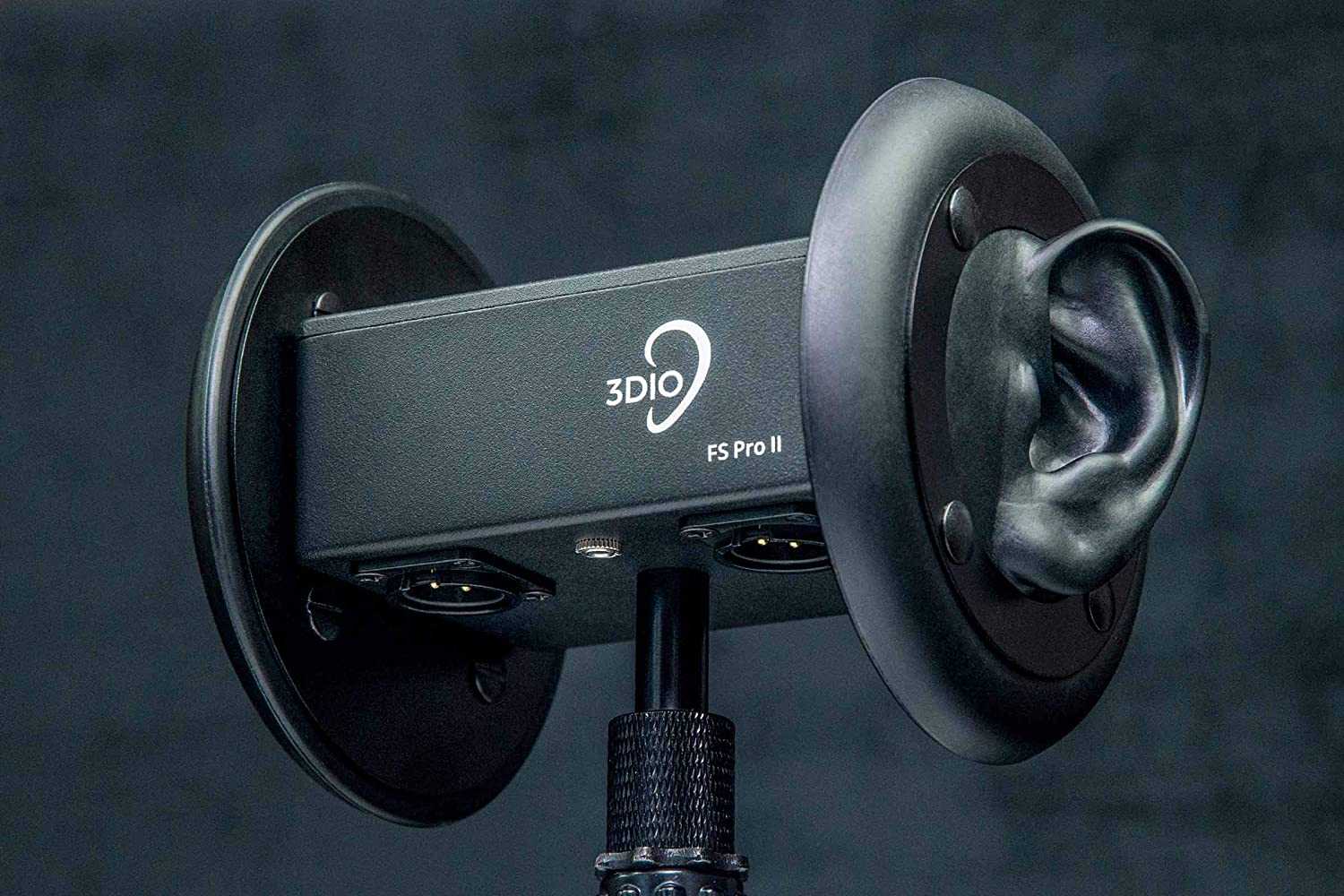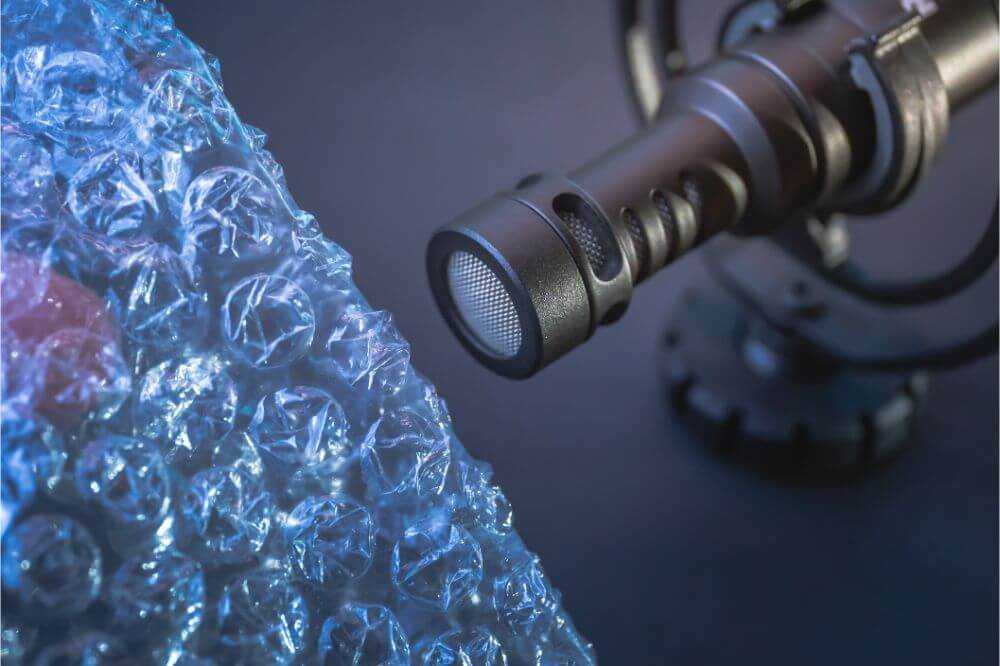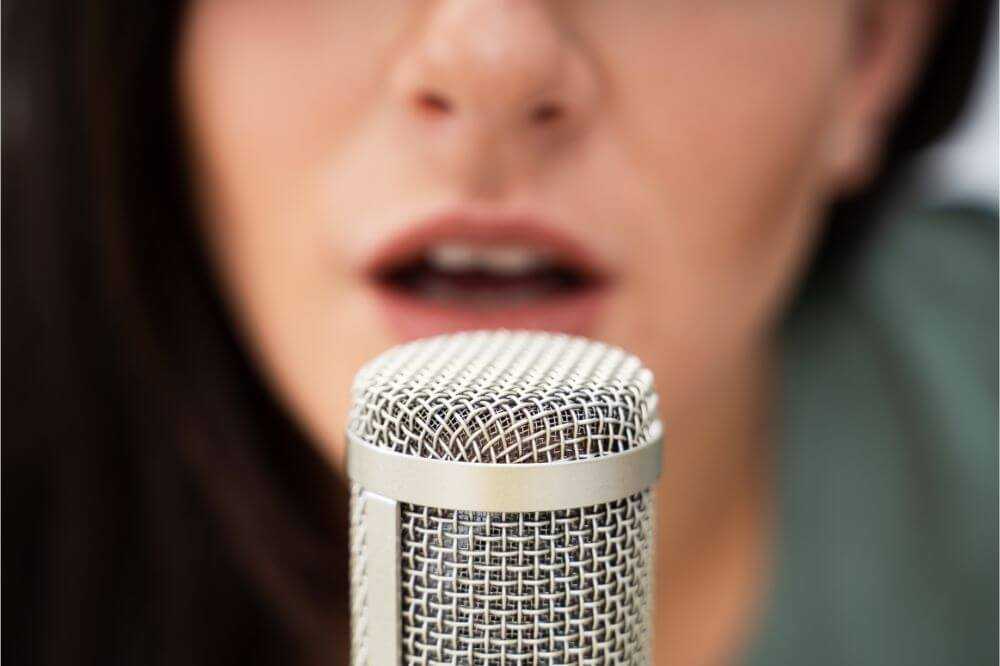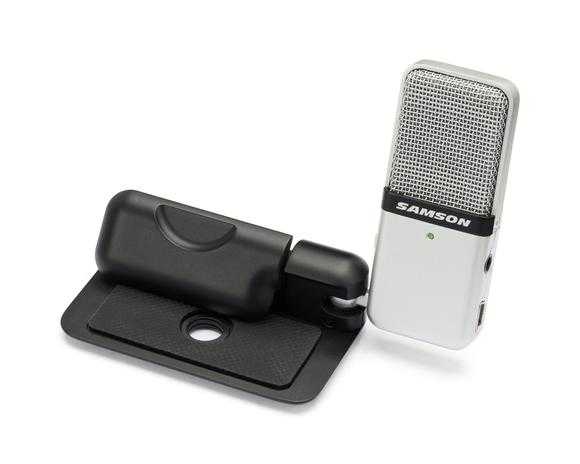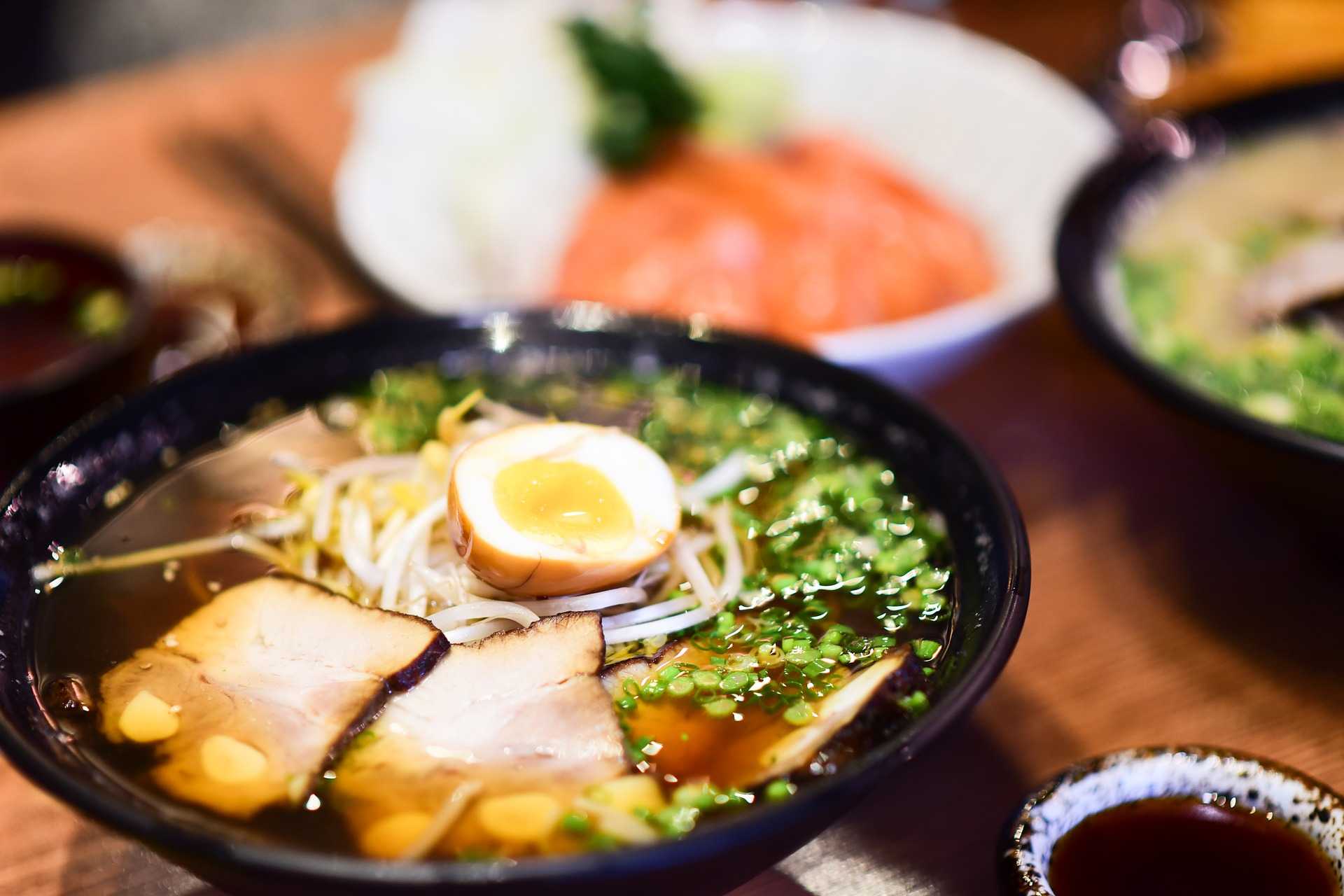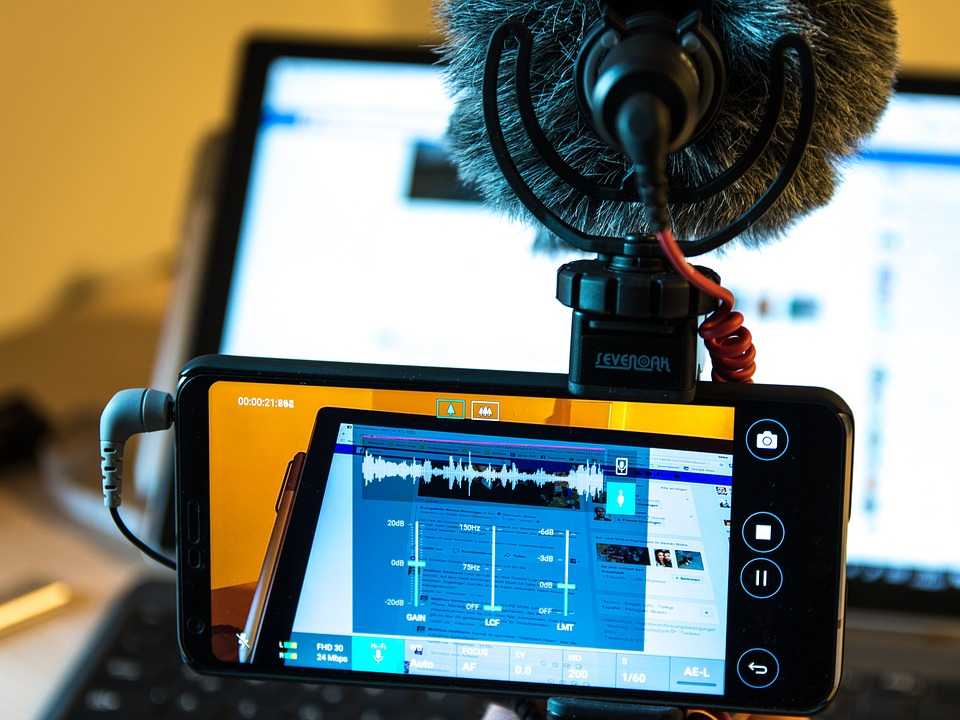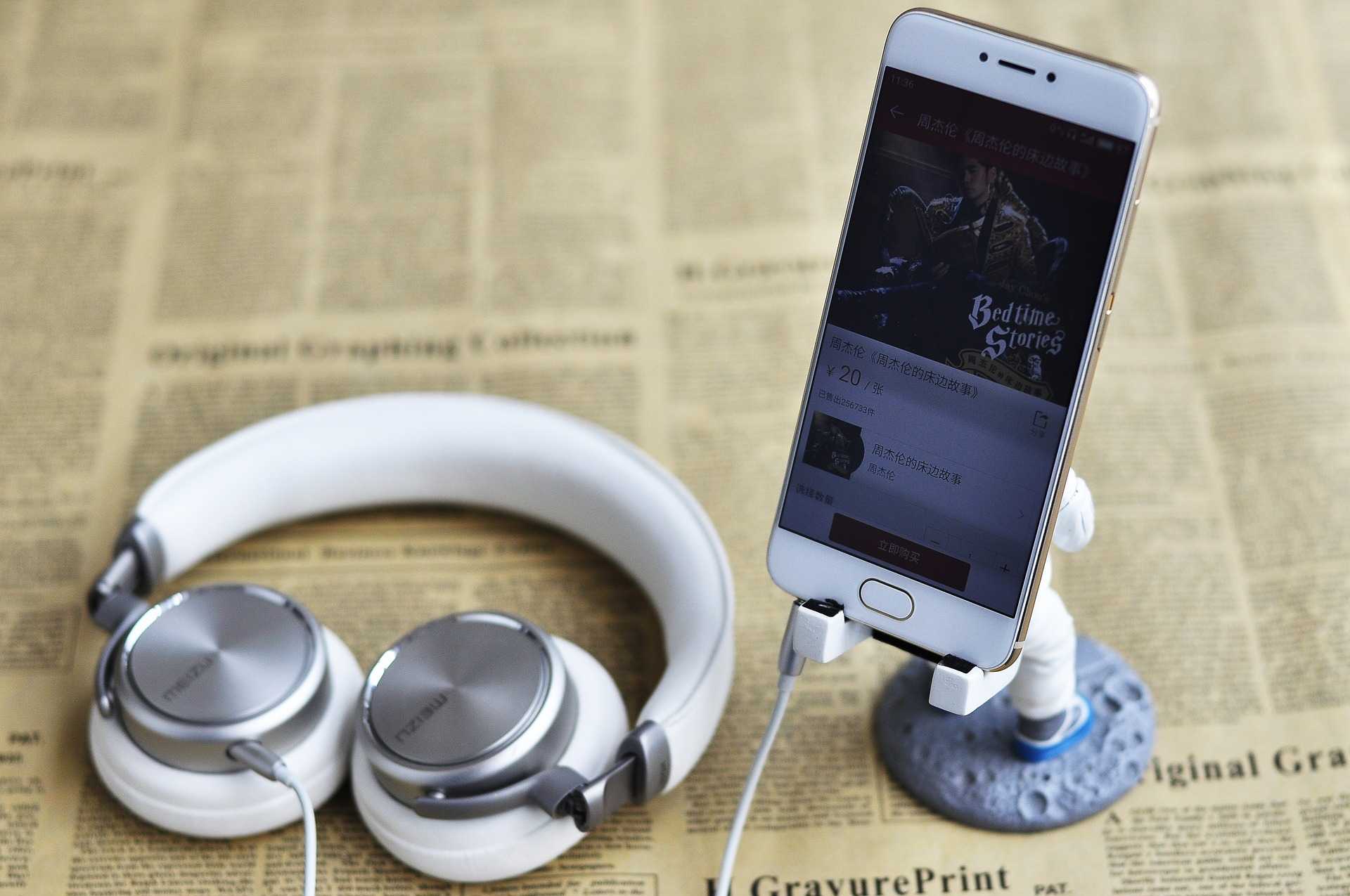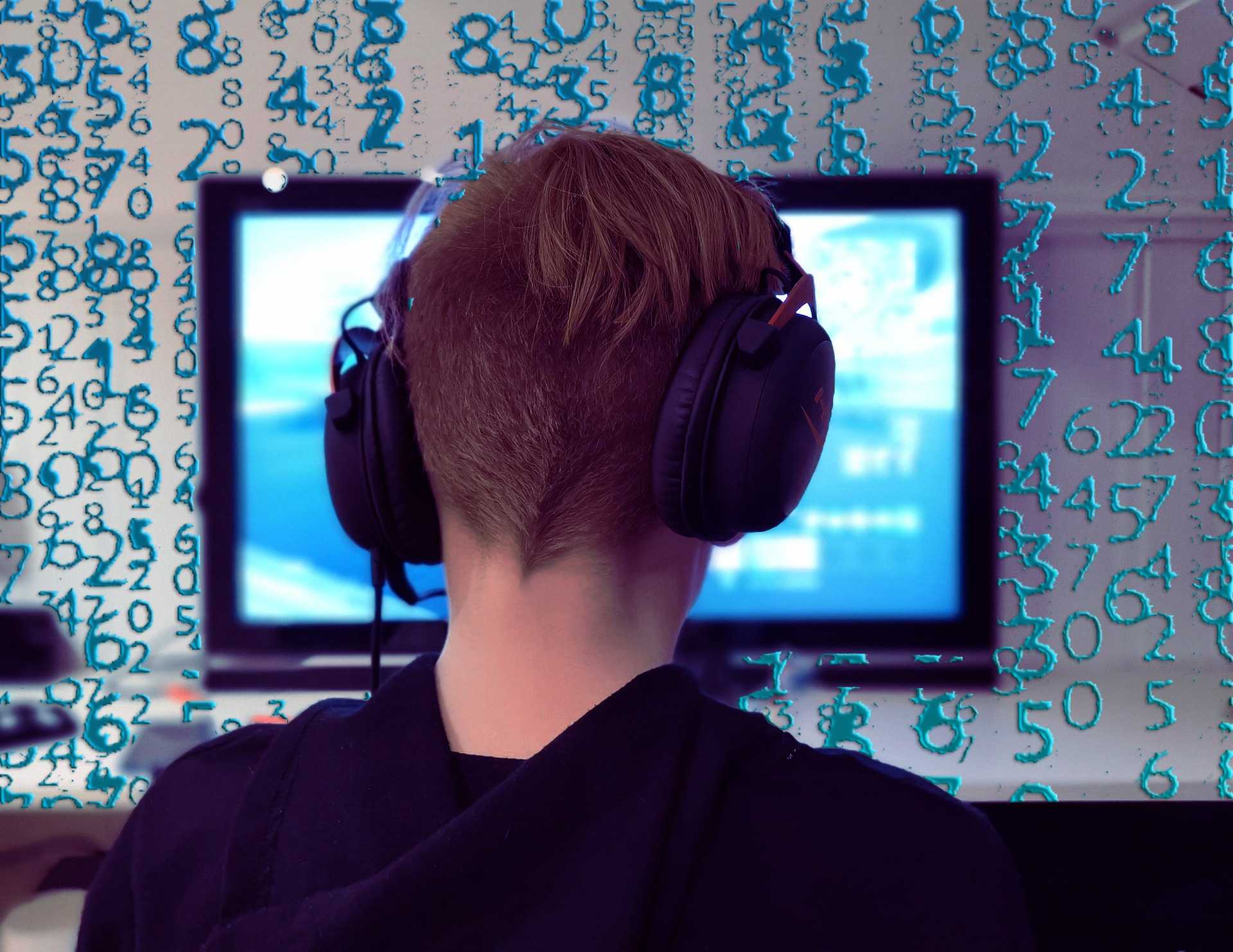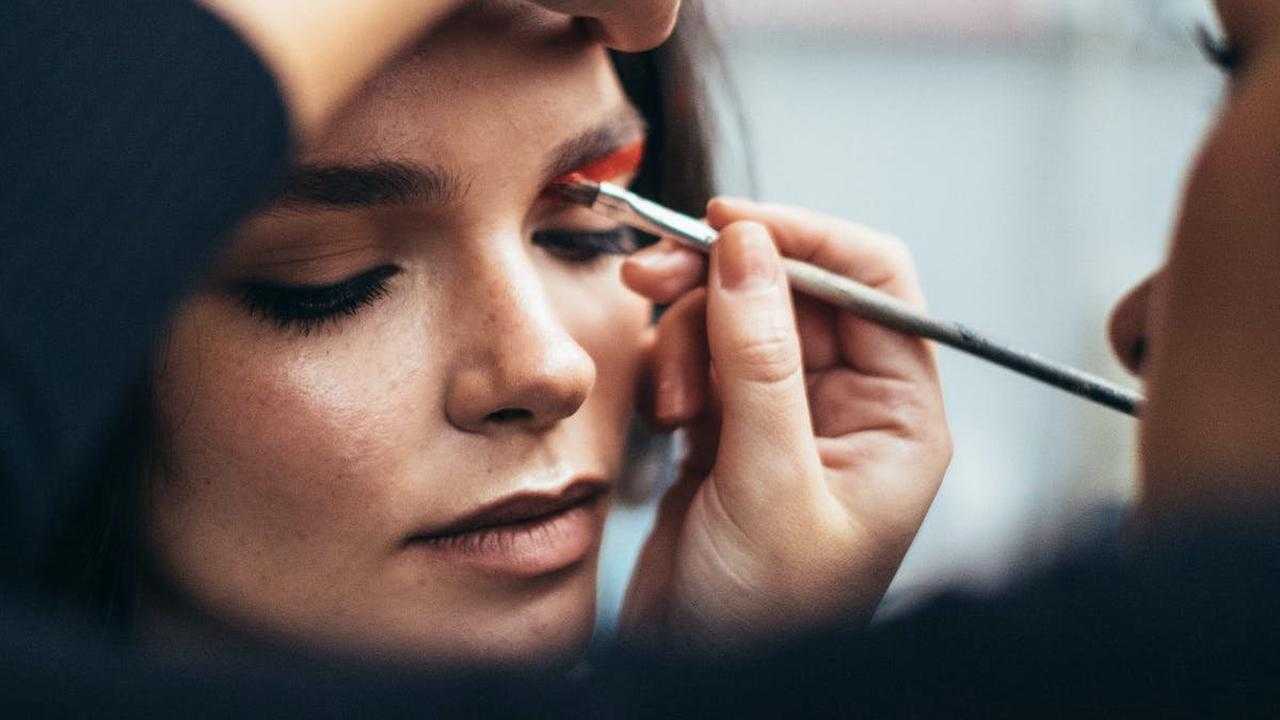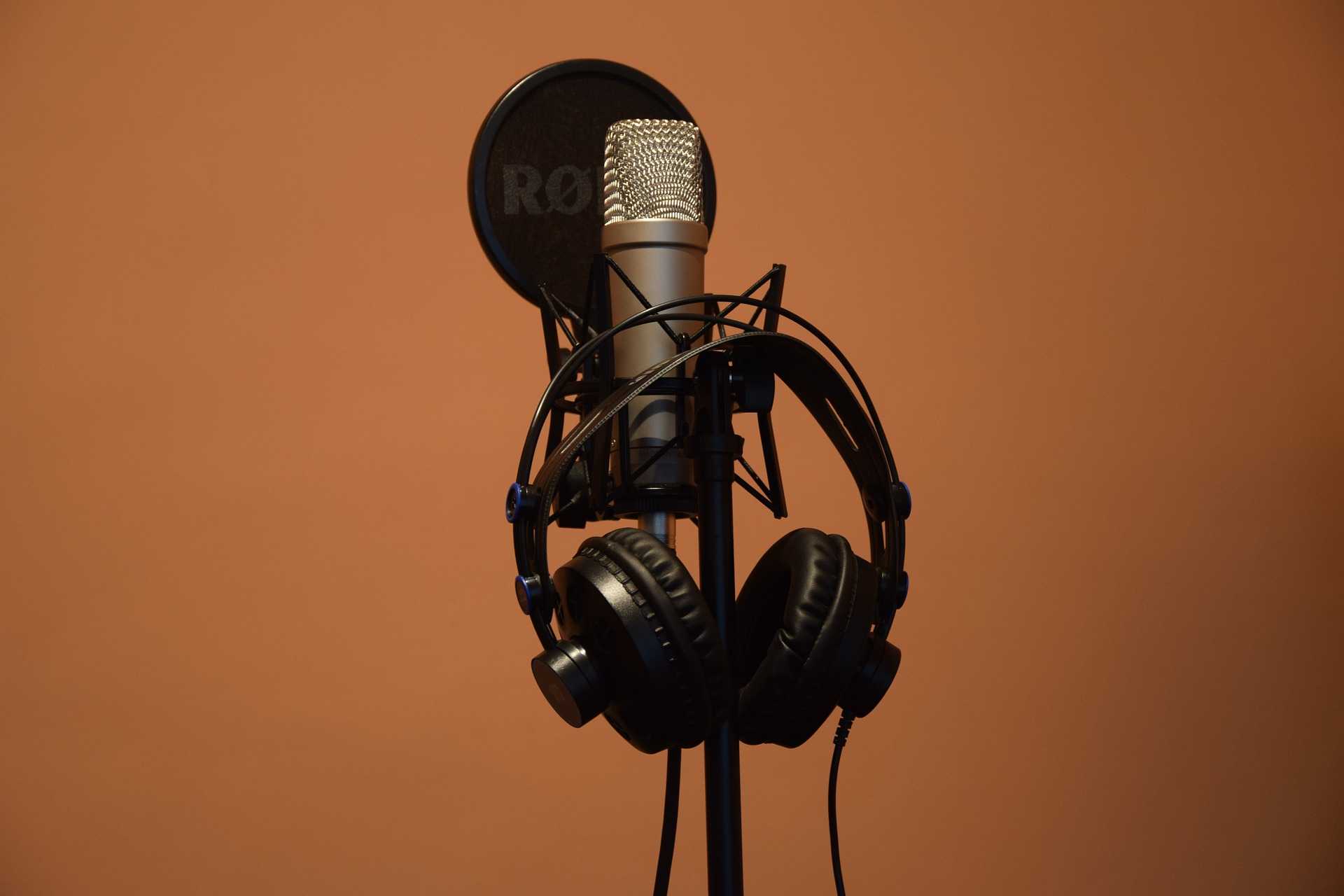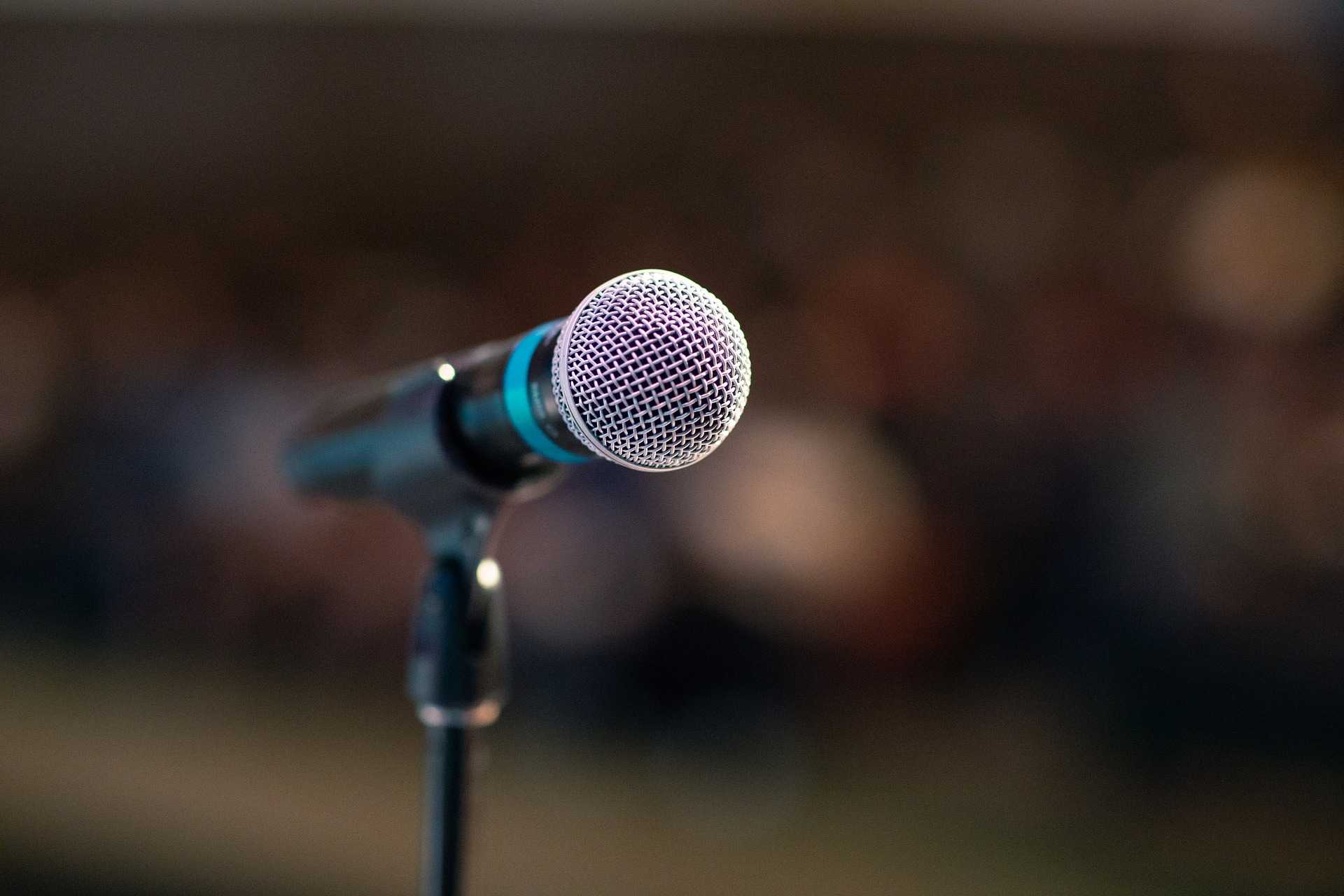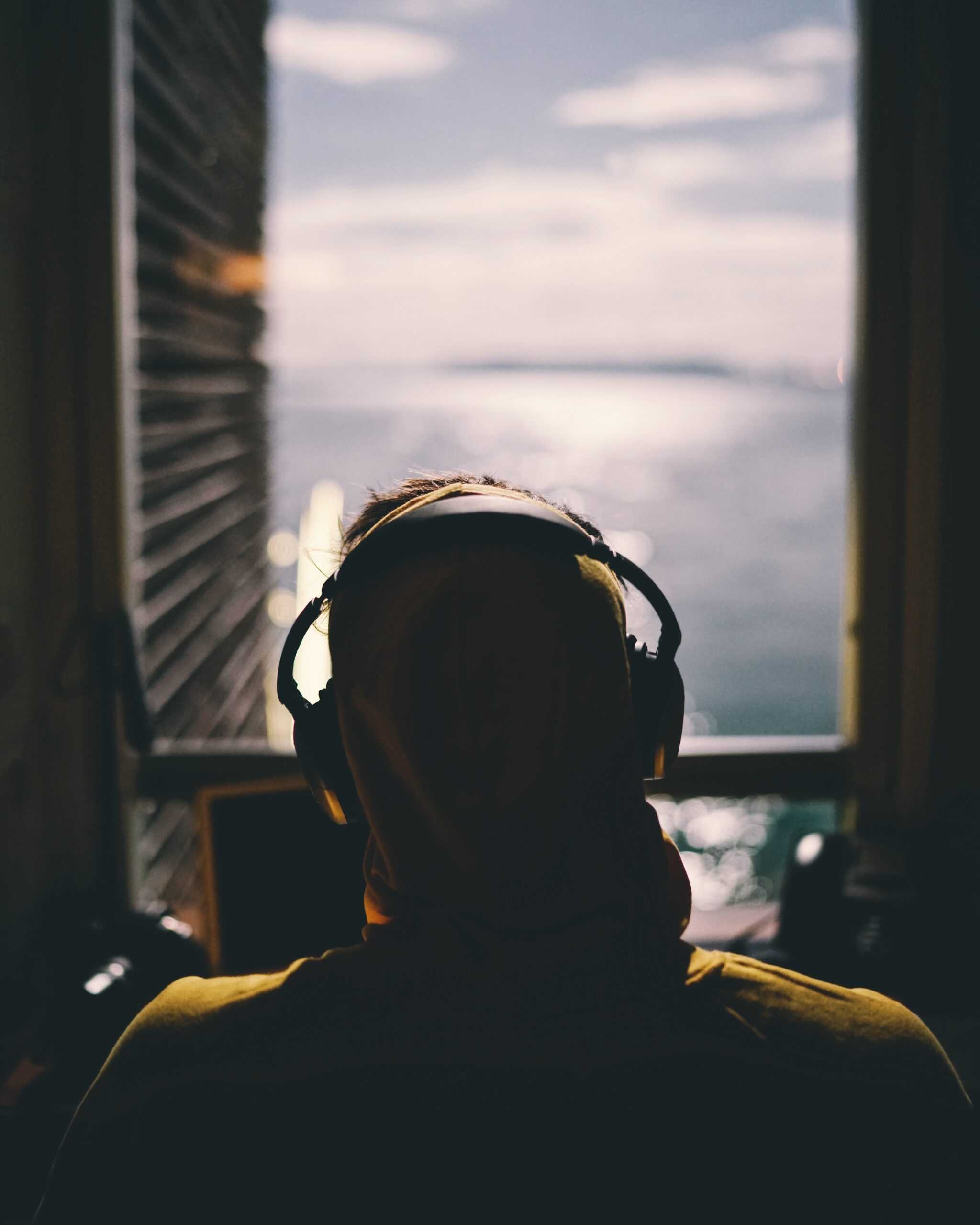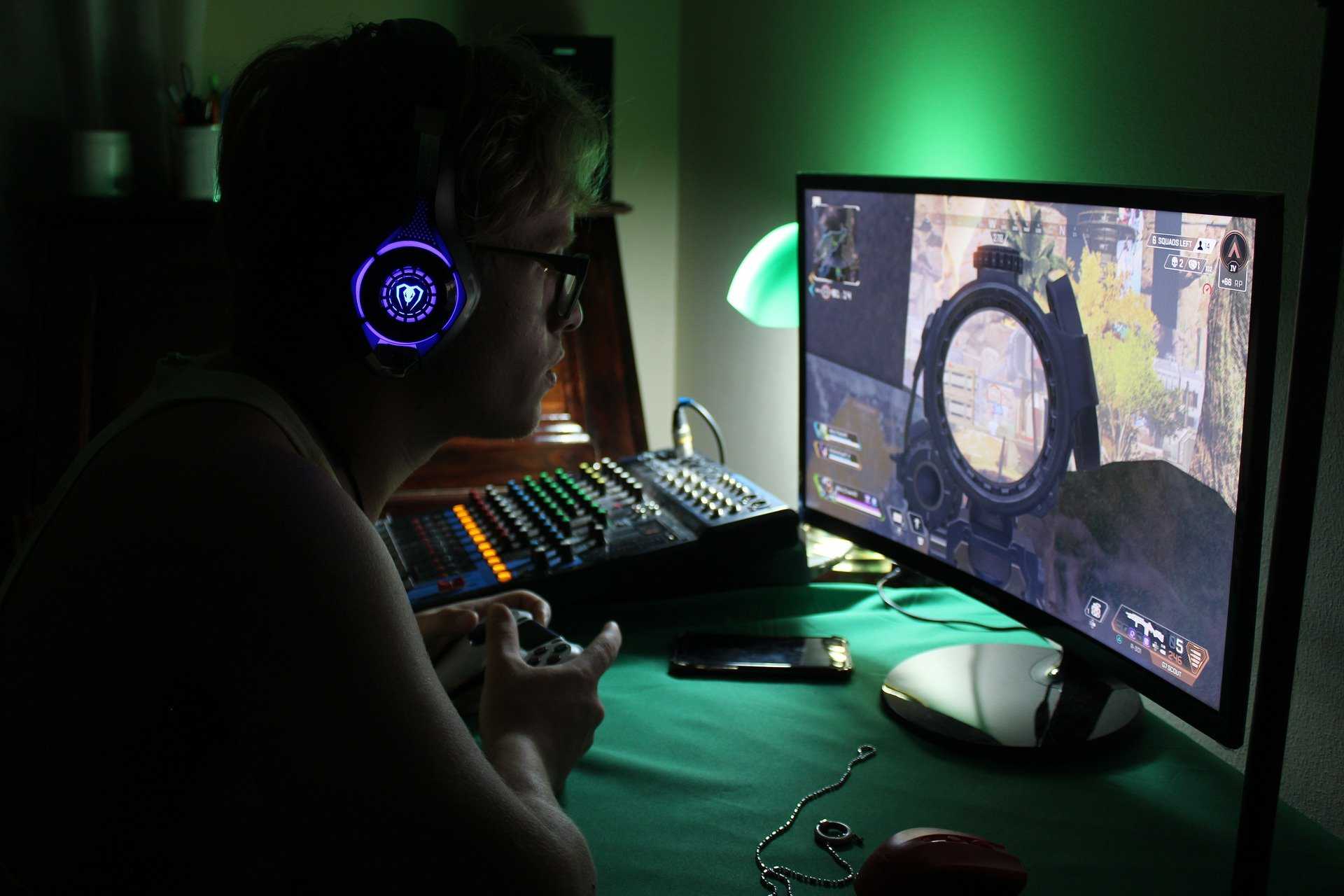Best ASMR Microphones for all budgets
Updated on March 21, 2024
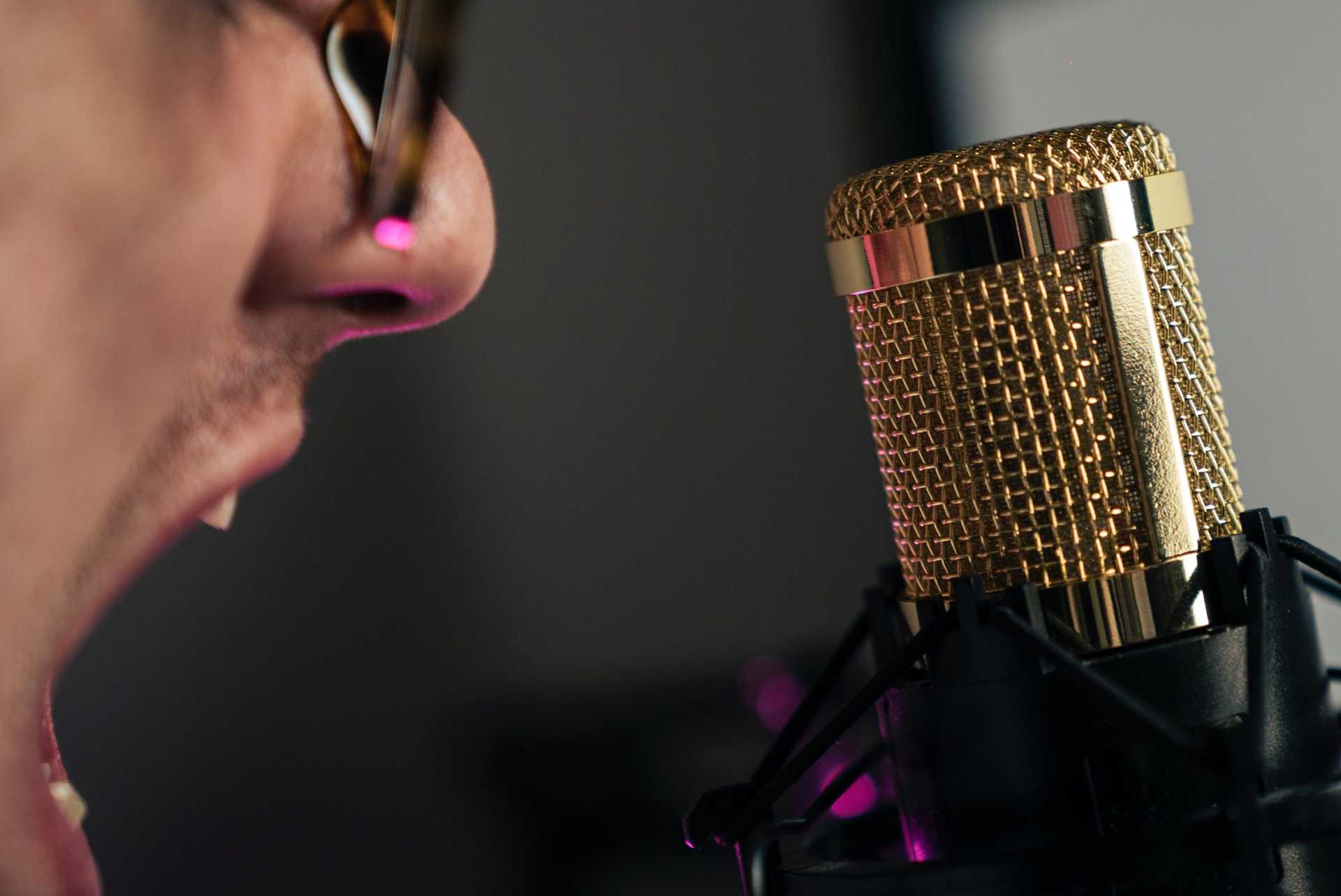
- Top 19 ASMR Microphones
- • 1. Razer Seiren Mini: Best for Beginners
- • 2. 3Dio FS Pro II Binaural Microphone: Best for Professionals
- • 3. Audio-Technica AT2020: Best Value for Money
- • 4. 3Dio FS: Best Binaural
- • 5. Rode NT1-A Condenser: Best XLR
- • 6. Blue Yeti: Best USB
- • 7. Rode K2 Condenser: Best High-End
- • 8. Blue Yeti Nano: Best Compact
- • 9. Audio Technica AT 4022: Best Omnidirectional
- • 10. Shure SM7B: Best in Versatility
- • 11. Rode NT: Best Frequency Range
- • 12. ZealSound: Best Under $100
- • 13. Stellar X2
- • 14. LCT-440 Pure
- • 15. Neumann TLM 102
- • 16. Samson Go
- • 17. AKG Pro Audio P220
- • 18. HyperX Quadcast
- • 19. Blue Snowball iCE
- Buyer's Guide for ASMR Microphone
- What to Consider Before Purchasing an ASMR Microphone
- FAQs
- Final thoughts
- Top 19 ASMR Microphones
- • 1. Razer Seiren Mini: Best for Beginners
- • 2. 3Dio FS Pro II Binaural Microphone: Best for Professionals
- • 3. Audio-Technica AT2020: Best Value for Money
- • 4. 3Dio FS: Best Binaural
- • 5. Rode NT1-A Condenser: Best XLR
- • 6. Blue Yeti: Best USB
- • 7. Rode K2 Condenser: Best High-End
- • 8. Blue Yeti Nano: Best Compact
- • 9. Audio Technica AT 4022: Best Omnidirectional
- • 10. Shure SM7B: Best in Versatility
- • 11. Rode NT: Best Frequency Range
- • 12. ZealSound: Best Under $100
- • 13. Stellar X2
- • 14. LCT-440 Pure
- • 15. Neumann TLM 102
- • 16. Samson Go
- • 17. AKG Pro Audio P220
- • 18. HyperX Quadcast
- • 19. Blue Snowball iCE
- Buyer's Guide for ASMR Microphone
- What to Consider Before Purchasing an ASMR Microphone
- FAQs
- Final thoughts
You’ve got the ideas for spine-tingling ASMR videos, but you may need the right gear. Luckily, there’s no shortage of auditory device choices regarding ASMR microphones.
That being said, you’ll be able to find a microphone capable of delivering the goosebump-inducing effect you’re looking for.
Whether it’s recording your dog chewing on crunchy bits or the classic whispering and crinkling, ASMR microphones will give you optimal results.
Stick around to learn more about the best ASMR microphones and which one could potentially be your next purchase.
Top 19 ASMR Microphones
ASMR or autonomous sensory meridian response often triggers calming sensations around your body. These kinds of sensations are affected by the audio quality produced.
For this reason, if you want to make it in the competitive ASMR video-making industry, you’ll want to invest in the best microphones. Nevertheless, not every microphone can work for everybody.
We’ve categorized your choices based on several aspects such as beginner-level use and budget-friendly options. Without further ado, here are the best ASMR microphones.
1. Razer Seiren Mini: Best for Beginners
The Razer Seiren Mini provides you with a great push into the ASMR world. The mini microphone set is relatively affordable, easy to use, and even comes in three shades, namely, pink, white, and black.
The compactly-designed microphone will take up little space in your working area, giving you more elbow room. In addition to this, the device is durable and gives off a supercardioid polar pattern. Additionally, you can mount this microphone to a stand or a boom arm.
The mic is fitted with a 14mm condenser capsule, allowing you to capture both high and low frequencies.
On top of this, the product’s shock resistance can help absorb any noises coming from accidental bumps. With regard to connectivity, the Razer functions through a USB connection.
2. 3Dio FS Pro II Binaural Microphone: Best for Professionals
3Dio is a popular brand in the ASMR field. One of the best-selling options is the regular 3Dio FS microphone. Nevertheless, if you want to take your satisfying recordings to the next level, then the 3Dio FS Pro II might fit the bill.
On top of its binaural polar pattern, this microphone contains a pair of human-ear prosthetics. This helps ASMRtists to deliver the most hi-fi sound along with a realistic listening experience.
For instance, let’s say you’re trying to film an ASMR video of bursting sap from a maple tree. In this case, your audience will get an all-around forest background sound, whether it’s the leaves crunching or birds singing from a distance.
Aside from that, the double XLR-connected microphone will require an audio interface to function, so you may be looking at additional expenses. Inside the ear canals, you’ll find core capsules that help in transferring sound waves to mic signals.
3. Audio-Technica AT2020: Best Value for Money
If making smart, data driven decisions is your thing, then you should consider the Audio-Technica AT2020 cardioid condenser microphone. It’s very difficult to find a better choice if we consider cost vs benefits.
Not only does it have a sleek, professional look that we absolutely love: at first glance, you can tell it’s a well-built microphone. Moreover, the AT2020’s stand mount is made of high-quality metal and provides maximum stability.
The AT2020 is a more viable option for those who are committed to getting high-quality sound. Otherwise, not everyone will be willing to spend money on a phantom power supply, a microphone stand, cable, and a pop filter/windscreen.
This condenser microphone is a great place to start if you’re just starting out as an ASMR artist, vocalist, or podcaster.
4. 3Dio FS: Best Binaural
Chances are, you’ve browsed through several ASMR videos. You may have come across an odd-looking microphone that has prosthetic human ear attachments on its sides. This contraption is the famed 3Dio FS microphone.
This microphone has several uses such as for filmmaking, nature recording, and foley sound stages. Nonetheless, this device has captured the interest of the ASMR community due to its realistic experience.
ASMR YouTubers use this mic to create a more sound-sensitive immersion for their audience. Some creators brush the ears, tap on them, whisper, or wipe them down. Overall, these microphones have widened the creative output for ASMR YouTubers.
In terms of sound quality, the 3Dio microphone uses a binaural polar pattern. It contains two condensers in each ear port. It also has two XLR connections for each side.
5. Rode NT1-A Condenser: Best XLR
The Rode NT1-A microphone is our top pick in terms of XLR connectivity. This microphone is fitted with a cardioid polar pattern giving it better sound reach at the front area.
The best part about the Rode NT1-A is that it’s one of the quietest microphones on this list. Its 5 dB low self-noise gives this mic an advantage in ASMR recording.
That being said, the XLR-connected microphone features a pop screen, dust cover, and shock mount. In turn, the product provides you with exceptional value for money since it’s also under $200.
On top of being an ASMR recorder’s dream microphone, recording artists are also able to use it for acoustic instrumentals giving the device more flexibility in use.
6. Blue Yeti: Best USB
The Blue Yeti microphone is not only a popular choice among ASMR channels. Several YouTubers from PC gamers to podcasters enjoy using this USB-connected microphone.
One of the most unique selling points of the Blue Yeti is its flexibility in terms of polar patterns. You can choose between cardioid, bidirectional, omnidirectional, and stereo sound pickup patterns with the Blue Yeti.
Polar patterns are defined as the field in which the sound a microphone can detect. Aside from that, the Blue Yeti also comes with three condensers. This feature allows the microphone to create high-fidelity sound.
Condenser microphones are ideal for ASMR use since they can pick up high and low-frequency sounds. Plus, they produce fewer distortions in your recordings. Another great advantage offered by the Blue Yeti is its pop filter, which reduces any popping noise caused by fast-moving air.
In addition to all these positive features, the condenser microphone comes at an affordable price compared to other options.
7. Rode K2 Condenser: Best High-End
If you’re willing to splurge on a premium ASMR microphone then the Rode K2 might be worth a shot. Similar to the Blue Yeti microphone, the Rode K2 similarly offers varying polar patterns such as the binaural, omnidirectional, and cardioid choices.
The microphone’s Sound Pressure Level (SPL) can reach an impressive 162 dB. Additionally, you get low distortion and noise levels. Instead, you’re paying for crisp and clear recordings that are bound to induce some tingles.
What’s most interesting about the Rode K2 condenser could be its built-in valve reminiscent of the 50s. This gives the mic its signature warm tones that are better equipped at relaxing your audience.
The Rode K2 microphone features extra components when bought such as a travel case, SM2 shock mount, and a 30 ft cable power supply.
8. Blue Yeti Nano: Best Compact
The Blue Yeti brand is well-known among several YouTubers from podcasters to gaming channels. While the original Blue Yeti microphone provides exceptional quality, it may still be too heavy to carry around freely.
To compensate, the brand came up with the Blue Yeti Nano microphone. This contraption offers two polar patterns, namely, cardioid and omnidirectional. The 1.39 lbs microphone provides you with real-time monitoring, so you can avoid any latency when hearing your recordings.
Like the original Blue Yeti, you can connect its mini version through a USB cable. Plus, it contains two embedded condensers. Overall, the Blue Yeti Nano is ideal for traveling and outdoor excursions.
For example, you may be vacationing someplace icy and want to record yourself breaking off some icicles.
9. Audio Technica AT 4022: Best Omnidirectional
Omnidirectional polar pattern recording allows you to move at a 360-degree angle from the mic without compromising sound quality. Now, Audio Technica is a well-established audio equipment company.
Built in 1962, the founder, Hideo Matsushita, has created multiple headphones, turntables, and, most importantly, microphones.
We’ll be talking about the company’s Audio Technica 4022 model. After being in the industry for a long period, this microphone could provide you with reliability and trust.
In addition to this, you get low self-noise, which is crucial for ASMR recording. Aside from that, this microphone may work best for certain types of ASMR such as whispering, tapping, and chewing.
One of the best applications for this microphone could be pet recordings. Dogs, for example, tend to move their heads around when eating. Luckily, the omnidirectional mic can stabilize these movements so it wouldn’t be too obvious that the dog is moving in different directions.
10. Shure SM7B: Best in Versatility
If you’re considering a microphone not only for ASMR purposes, then you could consider the Shure SM7B model. This microphone encompasses several audio uses such as music or speech recording.
Nonetheless, due to its crystal clear recording abilities, it has earned its spot on the ASMR list. This dynamic microphone is unidirectional and can deliver a frequency response range going between 50Hz to 20kHz.
Aside from that, Shure, like other brands on this list, has a history. Founded in 1925, the company almost has a century’s worth of knowledge and audio experience so you’ll be in good hands. That being so, the microphone is XLR-connected and requires an audio interface to function.
11. Rode NT: Best Frequency Range
At first glance, the Rode NT may appear too clunky, but looks aside, the sound performance on this microphone is worth the buy. The microphone is USB connected, giving it ease of use. It also has a condenser in its capsule, which gives you studio-quality sound.
Plus, the microphone has a low self-noise, giving you a clearer sound. You may mostly find this mic used for whispering, but you can also use it for several creative applications such as relaxing massage videos and other roleplay options.
The condenser microphone has a unidirectional polar pattern, which provides you with either cardioid, supercardioid, or hypercardioid options. In addition to this, you also get a large frequency range going between 20Hz to 20kHz.
Having said that, this microphone also comes with extra products such as a pop filter, tripod base, carrying case, and mic mount. In turn, you’ll be getting more value for money.
12. ZealSound: Best Under $100
Whether you’re a beginner or unsure about your ASMR business launch, finding a budget-friendly option is preferable. Fortunately, several affordable options are available, but few are as wallet-friendly and high-quality as the ZealSound microphone.
On top of its reasonable price, the ZealSound is exceptionally easy to work with. You only need to plug the USB-connected microphone into your PC and you’re good to go. Plus, you get LED light indicators to help you figure out whether the device is muted or recording.
Besides that, the microphone features a cardioid polar pattern which offers crystal sound quality. The product comes with a type C adapter, an iPhone adapter, as well as a microphone foam windscreen.
The handheld microphone provides you with a frequency range between 50Hz to 20kHz giving you a lot of flexibility. Plus, the condenser device can be shock mounted.
13. Stellar X2
Although the Stellar X2 is primarily used for singing, this only means that it’ll perform well for some ASMR recording ideas. Whispering or making familiar mouth-pattering noises could give you the desired goosebump-inducing results with the Stellar X2.
One of the product’s most unique selling points is the material composition. The microphone’s capsules are made of high-quality brass and mylar imported from Japan. In turn, you can expect to experience higher sensitivity to sound detection from the Stellar X2.
Besides the capsules, the microphone’s build is constructed with iron and a strong frill to ensure longevity. Additionally, the brand pays a lot of attention when it comes to quality control. Each product is tested to guarantee a standard frequency range.
The Stellar X2 work through a cardioid polar pattern, making it ideal for whispering ASMR. Plus, it’s XLR connected, so you’ll require an audio interface for it to work.
14. LCT-440 Pure
LCT mics are a common choice among several ASMR content creators such as Lily Whispers, Dana ASMR, and Pierre G ASMR. One of the brand’s best-selling options is the LCT-440 Pure. The microphone operates at a cardioid polar pattern.
In addition to this, it’s a large diaphragm condenser microphone making it ideal for whispering, humming, and tapping. The mic also features a relatively low self-noise, giving you a more clear-cut audio recording.
The LCT-440 Pure comes with additional products like a leatherette bag, windshield, shock mount, and a magnetic pop filter. The latter will help you absorb all sibilance and plosive sounds for a less distorted sound.
15. Neumann TLM 102
If you’re willing to invest a large sum in an ASMR microphone, then you might want to consider the luxurious Neumann TLM 102. This top-of-the-line product is a condenser microphone featuring quiet low-self noise.
Once you use this premium mic, your viewers will feel as if you’re speaking to them in the same room. With such high sensitivity toward sound detection, this is one of the best ASMR tools you can use for all sorts of mouth noises.
Due to the cardioid patterned mic’s effortless sound detection, you’ll need to ensure that there are minimum background noise interferences. For this reason, it might be best to use this mic exclusively indoors.
Since it holds a cardioid pattern, it mainly picks up noise from the front area and avoids the sides and rear. Apart from that, the large diaphragm mic offers a sizeable frequency range stretching between 20Hz to 20kHz.
16. Samson Go
Don’t be fooled by this microphone’s small appearance. Despite its compactness, the Samson Go has a lot to offer such as two different polar patterns, namely, cardioid and omnidirectional. This is one of the best products on this list in terms of portability and budget-friendliness.
In turn, it’s the perfect starter tool for beginner ASMRtists. The pocket-sized mic is also easy to use since you only need to plug it into your device through a USB connection. Unlike several condenser microphones, the Samson Go doesn’t need an external audio interface or phantom power to operate.
Aside from its ASMR capabilities, you can also use this mini device for other purposes such as Zoom calls and vlogging. Now, the main con of using the Samson Go is that you may find it difficult to adjust a pop filter on it.
This filter is crucial in ASMR recording since it reduces the plosive sounds. Nevertheless, this issue can be resolved by DIYing your own pop filter to correctly fit the small mic.
17. AKG Pro Audio P220
The AKG Pro P220 features several plus points that’ll help you get one step closer to ASMR fame. From its cardioid polar pattern to its high 20Hz to 20kHz frequency range, this tool can make a game-changing addition to your ASMR tool kit.
The product also comes with a carrying case as well as a spider-shaped shock mount. On top of these features, the build of the microphone is also worth mentioning due to its rugged and durable metal design.
Plus, the microphone can cut off any footfall or rumbling noises thanks to its switchable base-cut filter. Besides that, the AKG brand has been around for over 65 years. The brand’s expertise in mic design will ensure you a successful step into the content creation field.
18. HyperX Quadcast
The HyperX Quadcast mic may not be the most talked about ASMR tool, but it deserves to be on this list. For one, it provides you with multiple polar pattern options similar to the Blue Yeti. It can give you omnidirectional, cardioid, stereo, and bidirectional patterns.
Additionally, you’re also given an anti-vibration shock mount to absorb any movements or jittering when using the mic. Apart from that, it’s relatively simple to use the HyperX Quadcast model.
To demonstrate, you can easily mute the mic with a tap on the top. This essentially helps you avoid any rough switching or clicking noises during your recording.
In addition to this, the ASMR microphone allows you to adjust the gain control. You can fix the sensitivity levels so it can pick up more on your sound, rather than any background noise.
That being said, some ASMRtists have used this tool for crinkling, crunching, and popping noises.
19. Blue Snowball iCE
For those still looking to kickstart their ASMR channel on a budget, the Blue Snowball microphone could be your best bet. This microphone is one of the lightest on the list, plus it’s easy to carry around.
As its name suggests, the Blue Snowball comes in a spherical build with a tripod-like stand. The main concern you might face in this case is the light stand. It may require some help to properly support the ball-shaped microphone.
Having said that, the USB-connected microphone primarily operates through a cardioid pattern. This means that your sound source needs to emanate from in front of the mic.
Besides ASMR, you can use the Blue Snowball for several other applications like Skype or Discord calls, plus, it’s gamer-friendly.
Overall, the condenser mic’s sound quality can fit up to ASMR standards and comes at a highly affordable price point.
Buyer’s Guide for ASMR Microphone
Before choosing an ASMR microphone, you’ll want to make sure you have a clear idea of all the features and characteristics of the device. That way, you can make a better buying and investment choice.
Polar Pattern
The polar pattern of a mic sort of works like a sonar reading. It shows you the surrounding noises that the microphone can detect.
The field around the microphone is seen through a three-dimensional lens. Apart from that, polar patterns come in several shapes. Here are some of them below.
Cardioid
As its name suggests, the cardioid polar pattern has an upside-down heart-shaped field covering its frontal space. The main sound detection comes from the front region.
Meanwhile, the sides aren’t as powerful at picking up sound, while the back doesn’t pick up any sound altogether. Within the cardioid polar pattern, you can find different sub-types such as the hypercardioid and supercardioid options.
Both types are relatively more sensitive to sound in the rear area of the microphone. The difference between them is that the hypercardioid has a larger field range at the bottom compared to the supercardioid microphone.
Bidirectional
The bidirectional microphone has multiple other names such as the binaural, stereo, or even the figure-8 polar pattern. This kind of microphone picks up sound from two different sources.
Interestingly, bidirectional microphones are used to mimic the human ear listening experience. Some microphones with this polar pattern are even ear-shaped.
That being so, the polar pattern’s field looks like an hourglass where the noise can be picked up from the front and back of the mic. Nonetheless, it barely takes in any sounds from its side directions.
Omnidirectional
The omnidirectional polar pattern picks up noise from a sphere-like field equally distanced around the microphone. Aside from that, omnidirectional microphones may carry more reverberations in their sound quality.
In addition to this, the sound performance remains the same throughout all sides of this type of microphone.
Microphone Type
In the ASMR world, you’ll likely find two types of microphones, namely, condenser and dynamic choices.
Condenser
These kinds of microphones are popularly used for ASMR video-making. Condenser microphones are fitted with light diaphragms that are hung from a plate. This diaphragm experiences pulses of surrounding sound waves.
Since it’s relatively thin, it’s more sensitive to its environment. This is why condenser microphones are ASMR-friendly and preferred over dynamic mics.
Dynamic
Although dynamic microphones are particularly reserved for loud sounds such as in concerts, you may still find some ASMRtists using them.
In terms of build, the microphone consists of a rotating magnet inside a coil, which is attached to the diaphragm.
As the sound travels, it triggers the diaphragm, in turn, also setting off the coil and magnet movements. These vibrations then turn into an electrical signal.
Price Point
Before getting your hands on any microphone, you’ll want to scope out your budget. Besides, the microphone may not be the only purchase to consider when looking for ASMR tools.
For instance, you may want to also take into account additional devices like amplifiers to better deliver your sound output.
The good news is that you can find ASMR microphones at varying price points ranging between $100 to $4000.
Versatility
You may not want to exclusively use your microphone for ASMR purposes. In this case, try to look for microphones with extra features that can accommodate your other uses.
Aside from that, you may also want to get an ASMR microphone that covers all your recording needs. Otherwise, you may end up having to buy more audio enhancers.
Connection Options
In most cases, ASMR microphones are available in two different connection options, namely, USB and XLR. You may also find wireless choices, but we suggest steering clear of them since they don’t pick up noise as well.
USB
USB connections are typically a no-brainer since they’re already so widely used. Most ASMR recorders opt for this simple design. Plus, USB options tend to provide buttons to change up your polar pattern and gain.
XLR
For a more nuanced ASMR microphone experience, an XLR connection might be more suitable for you. This type of connection mainly relies on an external recording interface.
For the most part, you may find it connected to a mixer. Aside from that, you can adjust the audio before it gets recorded when using an XLR connection.
This factor allows you to record one of the highest-quality sounds. Nevertheless, this tool may require more professional knowledge compared to other options like the USB.
Self-Noise
This component identifies the amount of noise the microphone itself produces during recording. Typically, ASMR listeners will be in quiet environments where they can enjoy all the slight sounds you record.
For this reason, every noise counts and you’ll want a microphone with the least amount of self-noise for the best results.
Having said that, self-noise can also change based on the auditory device’s gain level. The latter determines how sensitive the mic is to surrounding sounds.
The higher the gain, the more self-noise a microphone will likely produce. Apart from that, purchasing a microphone with relatively high self-noise won’t mark the end of your ASMR career.
Thanks to various sound editing software like Audacity, you can simply cut the extra noise out of your recordings.
What to Consider Before Purchasing an ASMR Microphone
An ASMR microphone is a significantly hefty purchase. Finding the right one doesn’t only mean looking at the specs. Instead, you want to make sure that it’s the best type for your comfort of use.
Having said that, here are a few things worth considering before buying an ASMR microphone set.
Think About Your Audience
Ask yourself this, what kind of experience do you want to immerse your audience in? Some ASMR videos are all about tapping and crinkling noises.
Meanwhile, others provide a full-fledged roleplay experience such as dining in first class. Accordingly, the former may require binaural polar pattern microphones to give the users a more realistic immersion.
On the other hand, the latter kind of ASMR may require a less intuitive microphone but a more creative mindset.
Recording Atmosphere
A lot of ASMR listeners are mostly active sleep listeners. In other words, your videos are putting them to sleep. For this reason, you wouldn’t want any distracting background noises getting picked up during recording.
We suggest finding a quiet environment with the least amount of noise possible. That way, it’ll lessen your sound editing work.
Additional Equipment
If you’re still in the beginning phase of launching your ASMR channel, then you may still be creating the budgeting plan for your equipment. Now, while you’re doing so, we recommend factoring in extra equipment and accessories rather than just the microphone.
For example, you could include windshields, headphones, amplifiers, and pop filters. These tools will enhance your audio and entice more ASMR listeners to your channel.
Components of Microphones
When searching for microphones, you’ll likely stumble upon several terminologies. Understanding each component will help you gain the needed knowledge to make a more informed purchase decision. Here’s how we can help make sense of some of them below.
Diaphragm
Diaphragms are a critical component for most microphone use. Chances are, you’ve heard the saying, “sing from the diaphragm.” This ultimately allows the singer to maintain a loud voice for a longer time.
Now, device-wise the diaphragm is a thin film that could be either located in front of a plate or stuck to the magnetic coil on a condenser and dynamic microphone, respectively.
This membrane acts as the mic’s transducer, where it translates the sound wave movements to electrical energy. Apart from that, you can find three different types of diaphragms.
There are Moving coil and ribbon diaphragms that are used in dynamic microphones. Meanwhile, front plate diaphragms are found in condenser microphones.
Capsule
The capsule is the larger part that contains the microphone’s diaphragm. That being so, it also holds transducer characteristics where it converts one kind of energy to the other.
That being said, capsules can determine several microphone specifications. Some of these include its frequency response, polar pattern, proximity effect, and transient response.
Aside from that, capsules are also divided into several types and sub-types. This mainly depends on whether they’re located in a condenser or dynamic microphone since each one holds varying diaphragm structures.
Frequency Response
The frequency response in a microphone allows you to know the range of sound the device can produce. This essentially helps in determining how high or low the frequency and volume the microphone can make.
What Makes a Good ASMR Sound?
The gear is, more often than not, the key player when it comes to skyrocketing your ASMR career.
You can do all the whispering and tapping you want, but without the right equipment, you won’t be able to capture the view-worthy standard that ASMRtists strive for. Check out our tips below to help you create a successful ASMR video.
Sound Source
For starters, your sound needs to hold your listeners in a calming trance. To do so, you need to watch out for factors such as sibilance and plosives. The former usually occurs when you enunciate the “S” and “Sh” sounds.
The latter is more prominently detected in the “B,” “P,” and “T” sounds. Overall, both sound sources need to be balanced to achieve the right frequency balance for your listeners. That being said, you can also consider using a pop filter to help reduce the overly-high frequency sound effects.
Audio Equipment
When choosing an ASMR microphone, you might want to lean on stereo options for a more immersive listening experience. With two sound inputs, you’d be getting a more enhanced sound effect that’ll better engage your viewers.
When it comes to choosing between a condenser or dynamic microphone, the former is more popularly used by ASMRtists. This is because it provides a more detailed sound output.
FAQs
What microphone do most YouTubers use?
Most YouTubers go for USB microphones. Since most content creators need a mic near their computers, the USB option is more versatile and all-around easier to use.
What microphones do ASMR YouTubers use?
One of the major trends in terms of ASMR mics is the 3Dio microphone set. The device ideally emulates the human listening experience since it even has ears.
How do I trigger ASMR?
You can induce this tingly feeling through multiple tactics such as whispering, humming, blowing, tapping, and even writing. Some ASMR YouTubers have found more creative ideas such as allowing viewers to experience a roleplay Spa Day.
Final thoughts
After examining several microphone options to kickstart your ASMR journey, you may have fixated on a particular option that ticks all your boxes.
That being so, it’s crucial to pick a high-fidelity microphone to produce the most distinctive sounds that’ll set you apart from other ASMRtists.
Our top pick would have to be between the famed Blue Yeti and eccentrically-designed 3Dio microphones. Both are widely used in the ASMR community and for good reason.
They offer sound quality and help deliver the most hair-raising content on YouTube. Having said that, we hope you find the right microphone set to start your calming ASMR journey.



















